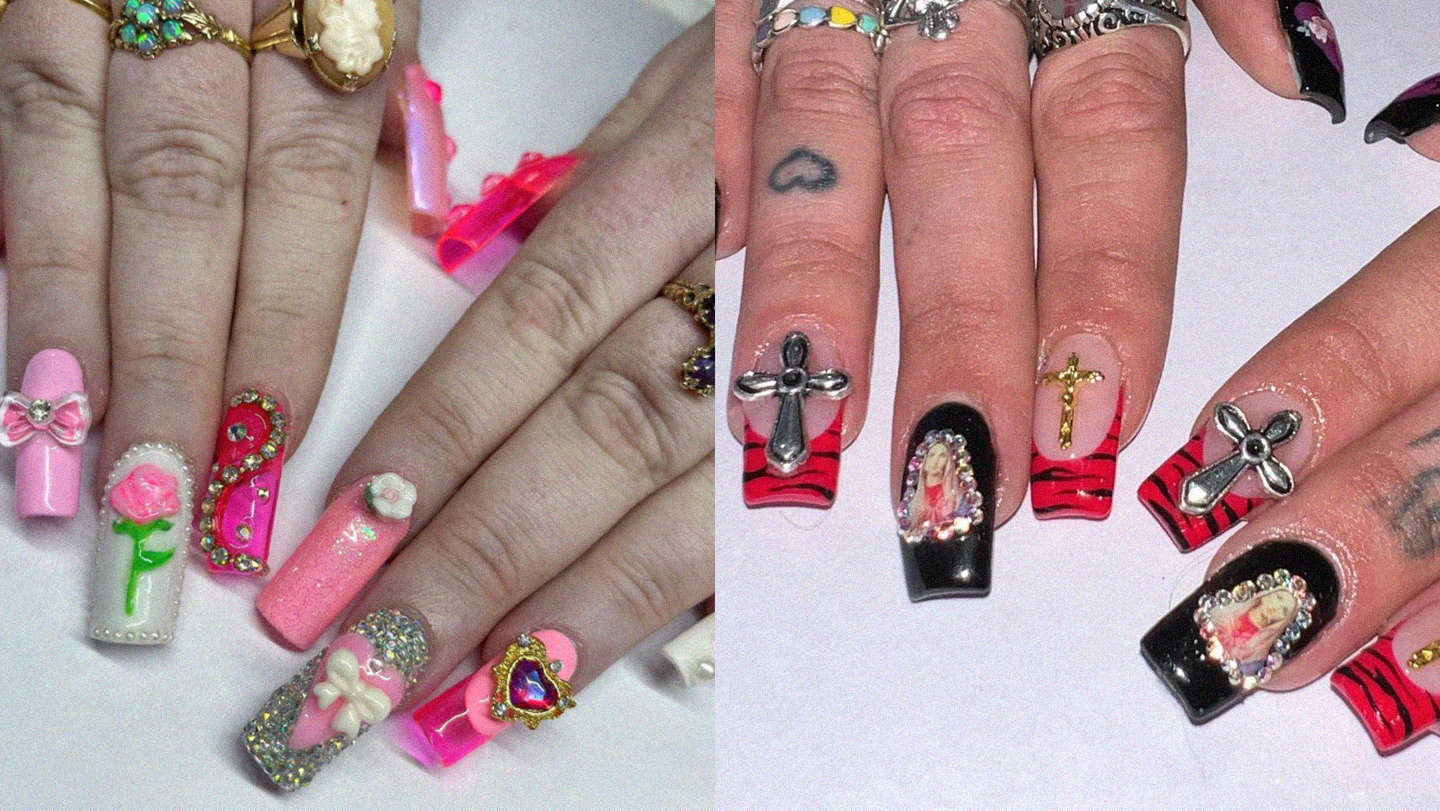Natasha Blake has wanted to be a nail artist since she was eight years old. She has always, you see, loved miniatures. While studying Fine Art at university – before launching London’s Fuego Nails – she escaped into miniature landscapes, creating tiny, intricate worlds in jars and on canvas. “Maybe I was an ant in a past life,” she says. Her fine art background, along with her love of tiny, complex, detailed works, has translated into her practice today. Natasha can spend over eight hours on one nail, even creating sets inspired by Picasso’s Guernica and Botticelli’s Birth of Venus. “I feel like there’s something special about taking a timeless masterpiece and recreating it as something wearable,” she says of her work.
Wearable masterpieces, or wearable works of art is perhaps the best way of describing what Natasha does with Fuego. Her sets feature less of the Clean Girl ™ style of nail art you might expect to find on Pinterest (French tips and swirls and a single accent nail) and are instead kitschy, over the top and ornate. One set of press-ons recreates a circuit board; another is adorned with crystals; another with tiny tarot cards.
If the inspiration is fantastical, the process is even more so, requiring hours of impressive attention to detail. It’s a process, Natasha says, that she accomplishes through the help of microdosing psychedelics, namely Psilocybin, a naturally occurring psychedelic fungi. “I guess it’s like picturing inspiration as a really bright, colourful realm with its own creatures and ecosystem,” the artist explains. “If the stresses and mundanity of life are a thick fog that veils it, microdosing just lifts that veil and helps you see more clearly what’s already inside your mind.”
Unlike tripping, which Natasha likens to breaking through the veil and riding on one of the creatures inside that realm, microdosing is a different experience – like opening a door to your true creativity. It’s not something she introduced to her practice casually, however. “I’ve done countless research on psilocybin and its effects on easing depression, an illness I’d suffered from since I was a teen,” she says. “It’s had a really calming effect on my work. It can sometimes be stressful running a business and I’ve felt the effects of microdosing easing that stress. It also helps me focus in terms of productivity; creatively it helps me hyper-focus onto my canvas, which leads me to paint better. My imagination expands and I can put together designs more fluidly.”
The use of psychedelics in a microdosing format is something that researchers are only beginning to understand. One ongoing study from the University of Washington, for example, is examining the effects of microdosing in alleviating depression in burnt out healthcare workers. Another study conducted at the Leiden University in The Netherlands, suggests that microdosing can indeed help improve creative thinking by assisting ‘out-of-the-box alternative solutions to a problem’ as well as ‘an improvement in convergent thinking’, while more research is ongoing on the effects of the drugs on anxiety and PTSD.
But Natasha’s use of psilocybin highlights its possibilities outside the realm of the medical world, and in the realm of creativity instead. “I know many creatives especially within my circle that microdose for a variety of reasons,” she says. “It’d be great to see it being talked about more and hear different people’s experiences, but I still feel like there’s a deep-rooted stigmatisation towards psychedelics. I see it as more of a holistic practice and I feel the public should be open to that perception also, instead of demonising them.”
Natasha points to a quotation from Terrance McKenna – an American ethnobotanist and mystic who advocated the responsible use of naturally occurring psychedelic plants: “Psychedelics are illegal not because a loving government is concerned that you may jump out of a third story window,” he wrote. “Psychedelics are illegal because they dissolve opinion structures and culturally laid down models of behaviour and information processing.” Whether true or not, it’s undoubtedly interesting that artists like Natasha are using the drug to expand the mind and enhance their practice. “I feel it’s important, now more than ever, to expand your consciousness and elevate your awareness; understanding that there’s more to the world than what meets the human eye,” Natasha adds. “Especially with how the world is operating right now – it only makes sense to go inwards.”

